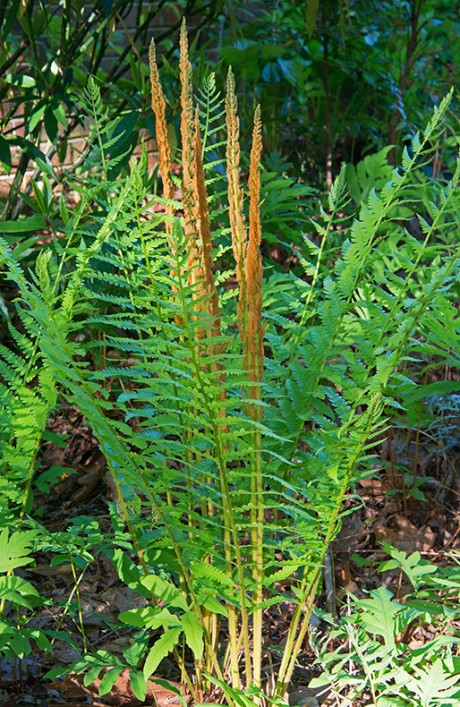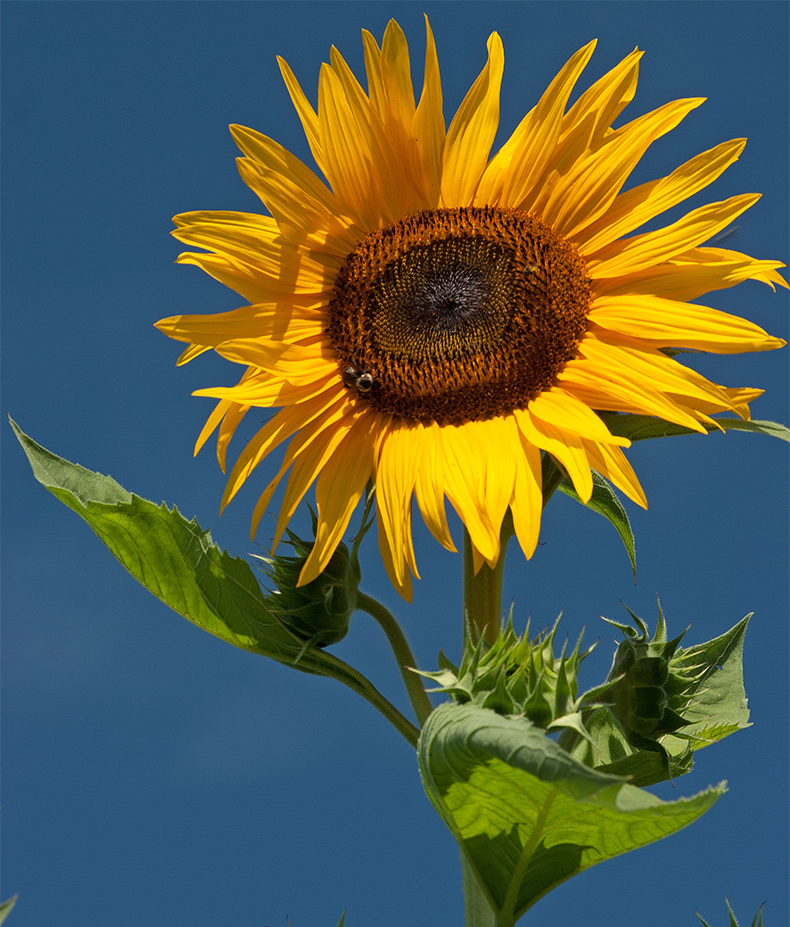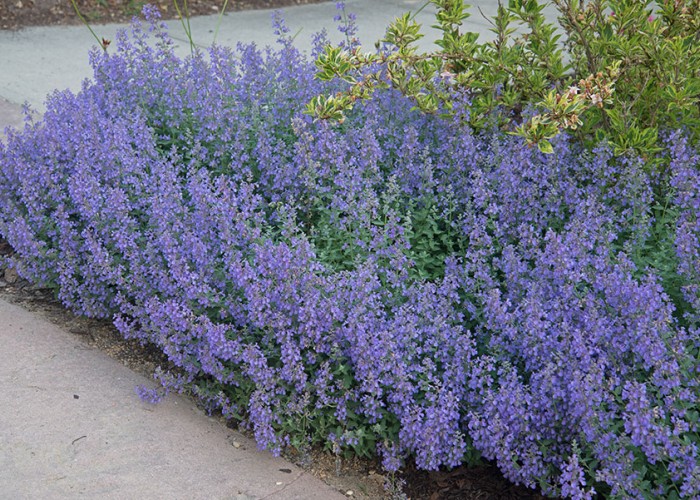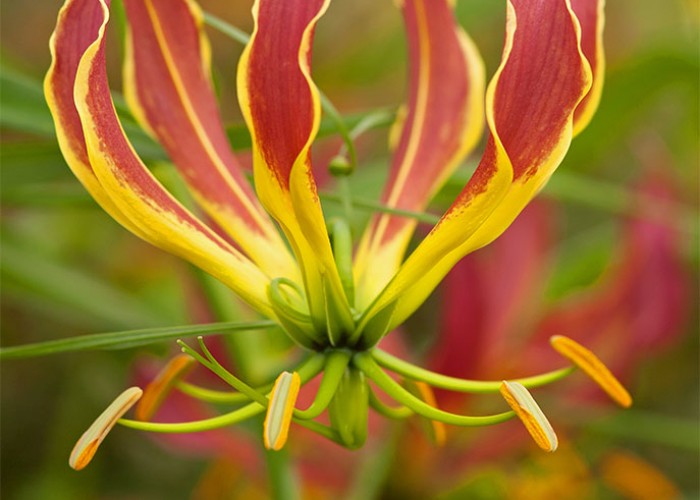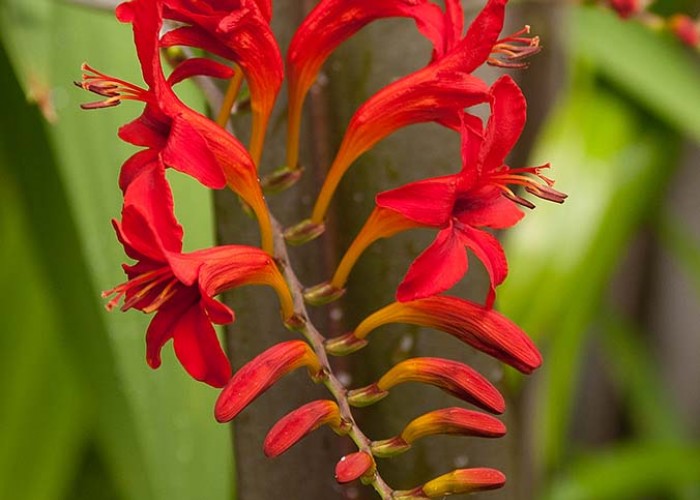Cinnamon Ferns are Boggy Native Beauties
Plus Garden To-Do’s for April
By L.A. Jackson | Photos by L.A. JacksonIn a perfect garden, soggy sites where sunlight struggles to shine don’t exist. Unfortunately, just about the only place “perfect” can be found in this world is under “P” in the dictionary, so gardeners often have to adapt. Part of this adjustment involves growing plants that don’t mind slop and shade.
One such plant high on my list is the cinnamon fern (Osmundastrum cinnamomeum), a tough, dependable, herbaceous perennial that is native to the eastern U.S. wetlands, where boggy grounds and deep shadows are a fact of plant life.
In the early spring, cinnamon fern earns its name. From the plant’s base, fiddleheads begin to unfurl, straighten and stiffen into slim, erect fronds that soon darken to a pleasant mid-brown hue the color of — well, I’m sure you can guess by now. While these stalks are heading skyward, a second, arching layer of gleaming green leaf fronds develops, unfolds and swirls around the fern’s center, with the contrast creating quite a nice sight in the garden.
Happy cinnamon ferns (which, by the way, are deer-resistant) usually stretch to about three to four feet wide and tall. Very happy cinnamon ferns can actually reach almost six feet high. The key to strong growth is to simply copy the conditions they prefer in the wild, meaning moist, fertile, acidic soil and shady lairs. This fern can stand some sun, but the more it is exposed, the more moisture it needs.
The cinnamon stick-like fronds are nice to see waving in the garden, but they also have a practical purpose: reproduction. Rather than seeds, they contain spores galore, but this doesn’t necessarily mean a feisty fern ready to spread and overwhelm the garden. While cinnamon ferns are capable of producing more of their own kind, for the most part, they tend to behave within their allotted growing spaces.
The leafy fronds of a cinnamon fern will turn a pleasant golden brown in the fall and then die back after the first frosts bite. If you want to visually tidy it up as winter sets in, cut spent foliage back to the central crown.
Cinnamon ferns are commonly found in the backwoods and swamps of our state, but don’t jump into your rubber boots and go looking for free pickins. Be a responsible gardener — respect what exists in nature and do your cinnamon fern hunting at local nurseries or online garden shops this spring.
Garden To-Do’s for April
- Thinking of introducing a youngster to the fun of gardening? One of the best annuals to start with is sunflowers. They quickly grow from seeds or starter plants. And then there’s the matter of heliotropism. While gardens typically evolve slowly over the summer months, which to some young minds translates into “boring,” immature sunflower blooms pull a neat trick off daily by turning towards the sun, following as it arches westward across the sky and then rotating back to the east overnight to greet the next day’s rising sun. After sunflower blossoms fully open, this motion stops, but until then: “Mom, Dad! Wanna see something cool?”
- With the danger of freezing weather becoming a memory, now is a good time to start planting such tender summer bulbs as gladioli, caladiums and cannas.
- Consider planting easy-to-grow culinary herbs such as dill, rosemary, basil, chives, thyme, sage or marjoram. Mint can also be tasty, but outside, pot the plants up. They spread quickly in a planting bed.
- Winged garden buddies will be abundant around bird feeders this month, and since they will also be busy building new homes, lightly scatter short pieces of string, thin strips of newspaper or small bits of cotton around feeder areas to supply additional construction material for their nest-assembling activities.
About the Author
L.A. Jackson is the former editor of Carolina Gardener Magazine. If you would like to ask him a question about your garden, contact L.A. at: lajackson1@gmail.com-
More April gardens
-
Share this story:

